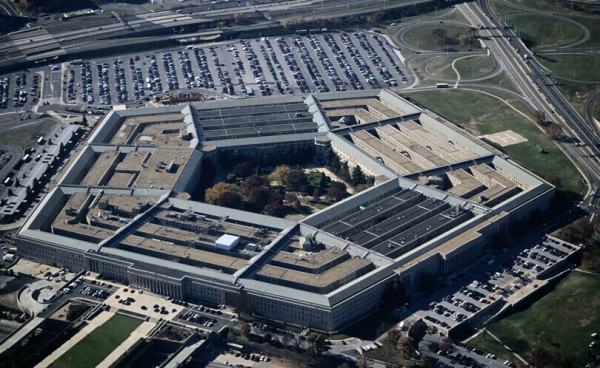COVID-19
Federal Covid Inquiry Finds Public Trust Plummeted

From the Brownstone Institute
By
There is nothing like aggressively wresting human and civil rights away from a population to forcibly impose rules that fly in the face of available evidence, whilst censoring those who try to point this out, and refusing to reveal information on which your rules are based, to bottom out trust in the population at large.
In a report handed down Tuesday, Australia’s federal Covid Inquiry found that extreme public health restrictions, coupled with a lack of transparency about the evidence informing these decisions, has led to a major slide in public trust.
Apparently we need experts and a federal inquiry to tell us the bleeding obvious.
This, by the way, is not a Covid inquiry “like a royal commission,” as was promised by Prime Minister Anthony Albanese prior to his election, but is the toothless ‘royal commission lite’ alternative put forward by Albanese after he got into power.
From the Australian,
“The long-awaited report into Australia’s handling of the Covid-19 pandemic has lashed state premiers for fuelling distrust and confusion, and for adopting draconian border closures that lacked consistency and compassion…
“In the report, the panel argued the need for transparency in future pandemic responses after “economic, social and mental health and human rights impacts were not always understood or considered” in 2020.”
That’s putting it lightly.
Economic, social and mental health, and human rights impacts weren’t considered at all.
That’s why the Queensland Supreme Court ruled that Covid vaccine mandates enforced by the Police Commissioner were unlawful. Justice Glenn Martin held that the Police Commissioner “did not consider the human rights ramifications” before issuing the Covid workplace vaccination directive within the Queensland Police Service (QPS).
When asked about potential human rights abuses caused by his government’s heavy-handed Covid response, former Victorian Premier Dan Andrews retorted, “Seriously? One more comment about human rights – honestly.”
In one egregious case, the Ombudsman determined that the Andrews Government had “breached human rights” by confining over 3,000 Melburnians to nine tower blocks, under police guard, for up to two weeks.
Back to the Australian,
“[The report] lashed “control measures” instituted by state and federal authorities without sufficient explanation.
“This fed the perception that the government did not trust the public to understand or interpret the information correctly and contributed to the decrease in trust,” the summary reads.
“It was the mandating of public health restrictions, especially vaccination, that had the biggest negative impact on trust. The combination of mandatory measures and the perception people had that they were unable to criticize or question government decisions and policies has contributed to non‑mandated vaccination rates falling to dangerously low levels.”
This is absolutely the case. The hashtag I used the most on social media during Australia’s Covid response was, ‘make it make sense.’
There is nothing like aggressively wresting human and civil rights away from a population to forcibly impose rules that fly in the face of available evidence, whilst censoring those who try to point this out, and refusing to reveal information on which your rules are based, to bottom out trust in the population at large.
The biggest failure by far was the silver bullet vaccines that authorities mandated in order to prevent infection and transmission, when they were not tested for such endpoints, and observational data showed they waned in effectiveness after a month or two at best.
Safety surveillance databases exploded with adverse event reporting rates never seen before, yet authorities still insist these are definitely the best, most safe and effective products ever deployed on the population.
It’s small wonder then that fewer than 4% of Australians under the age of 65 have bothered to get a booster in the past six months.
But the nonsensical Covid response wasn’t just limited to the failure of the vaccines to deliver as promised. A few other rules that made no sense:
You need to be protected by a mask standing up, but if sitting at a table you are safe.
Mandatory vaccines are voluntary.
Rapid antigen tests are illegal – wait, now they’re mandatory.
Footballers can cross the border safely but children wishing to visit a dying parent cannot.
And so on, and so on, and so on.
To this day, federal, state, and territory governments have blocked all attempts to access the health advice on which their extremist policies were based.
In an address on Tuesday, Health Minister Mark Butler admitted that “heavy-handed” policies implemented during the pandemic eroded trust, and that “many of the measures taken during Covid-19 are unlikely to be accepted by the population again.”
But don’t think for one second that means they won’t try it again.
Just as the Queensland Government took its Supreme Court loss as a signal that it needs to add a ‘considering human rights’ box-ticking exercise next time it breaches human rights to bring in a mandate, the federal Covid Inquiry report recommends ways to do the whole shebang next time, but better.
That includes more spending, fast-tracking the new Australian Centre for Disease Control (CDC, which the government has invested $251.7 million to establish), and better global coordination, particularly with the World Health Organization’s One Health policy.
The report recommends transparent, evidence-based decision-making next time around, but in light of my recent interactions with the Therapeutic Goods Administration (TGA), forgive me for considering this a pipe dream under the political status quo.
Butler said that the report was not about laying blame for individual decisions, but was rather about learning lessons. In other words, there will be no accountability.
Instead, Covid premiers and leaders have been awarded medals and cushy jobs. Most recently, Andrews was appointed to the lucrative role of chairman of Orygen, a youth mental health not-for-profit, to collective outrage.
A good thing that has come out of the report is that government overreach on vaccination mandates has been squarely blamed for a drop in vaccination rates in Australia more generally (not just for Covid vaccines).
“The erosion of trust is not only constraining our ability to respond to a pandemic when it next occurs, but it’s already, we know, bled into the performance of our vaccination programs, including our childhood vaccination programs,” said Butler.
“Since the beginning of Covid…we’ve seen a reduction of seven or eight percentage points in participation in the whooping cough vaccination program for under fives and measles vaccination program for under fives, which means we are well below herd immunity levels for those two really important diseases.”
Nice to see a politician finally admit the role of government in driving this trend, which is too often blamed on the boogeyman of ‘misinformation.’
Read the COVID-19 Response Inquiry Report.
Read the COVID-19 Response Inquiry Report Summary.
For further commentary, check out Alison Bevege’s response to the report on her Substack, Letters from Australia.
Republished from the author’s Substack
Alberta
Alberta announces citizens will have to pay for their COVID shots

From LifeSite News
The government said that it has decided to stop ‘waste’ by not making the shots free starting this fall.
Beginning this fall, COVID shots in the province will have to be pre-ordered at the full price, about $110, to receive them. (This will roll out in four ‘phases’. In the first phases COVID shots will still be free for those with pre-existing medical conditions, people on social programs, and seniors.)
The UCP government in a press release late last week noted due to new “federal COVID-19 vaccine procurement” rules, which place provinces and territories as being responsible for purchasing the jabs for residents, it has decided to stop “waste” by not making the jab free anymore.
“Now that Alberta’s government is responsible for procuring vaccines, it’s important to better determine how many vaccines are needed to support efforts to minimize waste and control costs,” the government stated.
“This new approach will ensure Alberta’s government is able to better determine its overall COVID-19 vaccine needs in the coming years, preventing significant waste.”
The New Democratic Party (NDP) took issue with the move to stop giving out the COVID shots for free, claiming it was “cruel” and would place a “financial burden” on people wanting the shots.
NDP health critic Sarah Hoffman claimed the move by the UCP is health “privatization” and the government should promote the abortion-tainted shots instead.
The UCP said that in 2023-2024, about 54 percent of the COVID shots were wasted, with Health Minister Adriana LaGrange saying, “In previous years, we’ve seen significant vaccine wastage.”
“By shifting to a targeted approach and introducing pre-ordering, we aim to better align supply with demand – ensuring we remain fiscally responsible while continuing to protect those at highest risk,” she said.
The UCP government said that the COVID shots for the fall will be rolled out in four phases, with those deemed “high risk” getting it for free until then. However, residents who want the shots this fall “will be required to pay the full cost of the vaccine, the government says.”
The jabs will only be available through public health clinics, with pharmacies no longer giving them out.
The UCP also noted that is change in policy comes as a result of the Federal Drug Administration in the United States recommending the jabs be stopped for young children and pregnant women.
The opposite happened in Canada, with the nation’s National Advisory Committee on Immunization (NACI) continuing to say that pregnant women should still regularly get COVID shots as part of their regular vaccine schedule.
The change in COVID jab policy is no surprise given Smith’s opposition to mandatory shots.
As reported by LifeSiteNews, early this year, Smith’s UCP government said it would consider halting COVID vaccines for healthy children.
Smith’s reasoning was in response to the Alberta COVID-19 Pandemic Data Review Task Force’s “COVID Pandemic Response” 269-page final report. The report was commissioned by Smith last year, giving the task force a sweeping mandate to investigate her predecessor’s COVID-era mandates and policies.
The task force’s final report recommended halting “the use of COVID-19 vaccines without full disclosure of their potential risks” as well as outright ending their use “for healthy children and teenagers as other jurisdictions have done,” mentioning countries like “Denmark, Sweden, Norway, Finland, and the U.K.”
The mRNA shots have also been linked to a multitude of negative and often severe side effects in children and all have connections to cell lines derived from aborted babies.
Many Canadian doctors who spoke out against COVID mandates and the experimental mRNA injections were censured by their medical boards.
LifeSiteNews has published an extensive amount of research on the dangers of the experimental COVID mRNA jabs that include heart damage and blood clots.
International
Pentagon agency to simulate lockdowns, mass vaccinations, public compliance messaging

From LifeSiteNews
With lockdowns, mass vaccination campaigns, and social distancing still on the table from the last around, it appears that AI and Machine Learning will play a much bigger role in the next.
DARPA is getting into the business of simulating disease outbreaks, including modeling interventions such as mass vaccination campaigns, lockdowns, and communication strategies.
At the end of May, the U.S. Defense Advanced Research Projects Agency (DARPA) put out a Request for Information (RFI) seeking information regarding “state-of-the-art capabilities in the simulation of disease outbreaks.”
The Pentagon’s research and development funding arm wants to hear from academic, industry, commercial, and startup communities on how to develop “advanced capabilities that drive technical innovation and identify critical gaps in bio-surveillance, diagnostics, and medical countermeasures” in order to “improve preparedness for future public health emergencies.”
Dr. @P_McCulloughMD: "This Is a Military Operation"
"The military said in 2012, 'We will end pandemics in 60 days using messenger RNA.' That's long before Moderna and Pfizer were even in the game. … They are profiting from this, but they didn't drive it." pic.twitter.com/71jAV5wfG0
— The Vigilant Fox 🦊 (@VigilantFox) March 12, 2023
As if masks, social distancing, lockdowns, and vaccination mandates under the unscientific guise of slowing the spread and preventing the transmission of COVID weren’t harmful enough, the U.S. military wants to model the effects of these exact same countermeasures for future outbreaks.
The RFI also asks participants “Fatality Rate & Immune Status: How are fatality rates and varying levels of population immunity (natural or vaccine-induced) incorporated into your simulations?“
Does “natural or vaccine-induced” relate to “population immunity” or “fatality rates” or both?
Moving on, the RFI gets into modeling lockdowns, social distancing, and mass vaccination campaigns, along with communication strategies:
Intervention Strategies: Detail the range of intervention strategies that can be modeled, including (but not limited to) vaccination campaigns, social distancing measures, quarantine protocols, treatments, and public health communication strategies. Specifically, describe the ability to model early intervention and its impact on outbreak trajectory.
The fact that DARPA wants to model these so-called intervention strategies just after the entire world experienced them suggests that these exact same measures will most likely be used again in the future:
“We are committed to developing advanced modeling capabilities to optimize response strategies and inform the next generation of (bio)technology innovations to protect the population from biological threats. We are particularly focused on understanding the complex interplay of factors that drive outbreak spread and evaluating the effectiveness of potential interventions.” — DARPA, Advanced Disease Outbreak Simulation Capabilities RFI, May 2025.
“Identification of optimal timelines and capabilities to detect, identify, attribute, and respond to disease outbreaks, including but not limited to biosensor density deployment achieving optimal detection timelines, are of interest.” — DARPA, Advanced Disease Outbreak Simulation Capabilities RFI, May 2025.
With lockdowns, mass vaccination campaigns, and social distancing still on the table from the last around, it appears that AI and Machine Learning will play a much bigger role in the next.
For future innovation, the DARPA RFI asks applicants to: “Please describe any novel technical approaches – or applications of diverse technical fields (e.g., machine learning, artificial intelligence, complex systems theory, behavioral science) – that you believe would significantly enhance the state-of-the-art capabilities in this field or simulation of biological systems wholistically.”
Instead of putting a Dr. Fauci, a Dr. Birx, a replaceable CDC director, a TV doctor, a big pharma CEO, or a Cuomo brother out there to lie to your face about how they were all just following The ScienceTM, why not use AI and ML and combine them with behavioral sciences in order to concoct your “public health communications strategies?”
When you look at recently announced DARPA programs like Kallisti and MAGICS, which are aimed at creating an algorithmic Theory of Mind to model, predict, and influence collective human behavior, you start to get a sense of how all these programs can interweave:
“The MAGICS ARC calls for paradigm-shifting approaches for modeling complex, dynamic systems for predicting collective human behaviour.” — DARPA, MAGICS ARC, April 2025
On April 8, DARPA issued an Advanced Research Concepts (ARC) opportunity for a new program called “Methodological Advancements for Generalizable Insights into Complex Systems (MAGICS)” that seeks “new methods and paradigms for modeling collective human behavior.”
Nowhere in the MAGICS description does it mention modeling or predicting the behavior of “adversaries,” as is DARPA’s custom.
Instead, it talks at length about “modeling human systems,” along with anticipating, predicting, understanding, and forecasting “collective human behavior” and “complex social phenomena” derived from “sociotechnical data sets.”
Could DARPA’s MAGICS program be applied to simulating collective human behavior when it comes to the next public health emergency, be it real or perceived?
“The goal of an upcoming program will be to develop an algorithmic theory of mind to model adversaries’ situational awareness and predict future behaviour.” — DARPA, Theory of Mind Special Notice, December 2024.
In December 2024, DARPA launched a similar program called Theory of Mind, which was renamed Kallisti a month later.
The goal of Theory of Mind is to develop “new capabilities to enable national security decisionmakers to optimize strategies for deterring or incentivizing actions by adversaries,” according to a very brief special announcement.
DARPA never mentions who those “adversaries” are. In the case of a public health emergency, an adversary could be anyone who questions authoritative messaging.
The Theory of Mind program will also:
… seek to combine algorithms with human expertise to explore, in a modeling and simulation environment, potential courses of action in national security scenarios with far greater breadth and efficiency than is currently possible.
This would provide decisionmakers with more options for incentive frameworks while preventing unwanted escalation.
We are interested in a comprehensive overview of current and emerging technologies for disease outbreak simulation, how simulation approaches could be extended beyond standard modeling methods, and to understand how diseases spread within and between individuals including population level dynamics.
They say that all the modeling and simulating across programs is for “national security,” but that is a very broad term.
DARPA is in the business of research and development for national security purposes, so why is the Pentagon modeling disease outbreaks and intervention strategies while simultaneously looking to predict and manipulate collective human behavior?
If and when the next outbreak occurs, the same draconian and Orwellian measures that governments and corporations deployed in the name of combating COVID are still on the table.
And AI, Machine Learning, and the military will play an even bigger role than the last time around.
From analyzing wastewater to learning about disease spread; from developing pharmaceuticals to measuring the effects of lockdowns and vaccine passports, from modeling and predicting human behavior to coming up with messaging strategies to keep everyone in compliance – “improving preparedness for future public health emergencies” is becoming more militaristically algorithmic by the day.
“We are exploring innovative solutions to enhance our understanding of outbreak dynamics and to improve preparedness for future public health emergencies.” — DARPA, Advanced Disease Outbreak Simulation Capabilities RFI, May 2025.
Kennedy on Covid Jabs as a Military Operation:
"Turns out that the vaccines were developed not by Moderna and Pfizer. They were developed by NIH.”
“They're owned. The patents are owned 50% by NIH.
They were manufactured by military contractors.”
pic.twitter.com/R6y8i8tAsD— Jonny Paradise 🌱 (@plantparadise7) April 15, 2025
Reprinted with permission from The Sociable.
-

 Health2 days ago
Health2 days agoLast day and last chance to win this dream home! Support the 2025 Red Deer Hospital Lottery before midnight!
-

 conflict2 days ago
conflict2 days ago“Evacuate”: Netanyahu Warns Tehran as Israel Expands Strikes on Iran’s Military Command
-

 Aristotle Foundation2 days ago
Aristotle Foundation2 days agoThe Canadian Medical Association’s inexplicable stance on pediatric gender medicine
-

 Energy2 days ago
Energy2 days agoCould the G7 Summit in Alberta be a historic moment for Canadian energy?
-

 Bruce Dowbiggin2 days ago
Bruce Dowbiggin2 days agoWOKE NBA Stars Seems Natural For CDN Advertisers. Why Won’t They Bite?
-

 Crime2 days ago
Crime2 days agoMinnesota shooter arrested after 48-hour manhunt
-

 conflict1 day ago
conflict1 day agoTrump leaves G7 early after urging evacuation of Tehran
-

 Alberta2 days ago
Alberta2 days agoAlberta announces citizens will have to pay for their COVID shots






